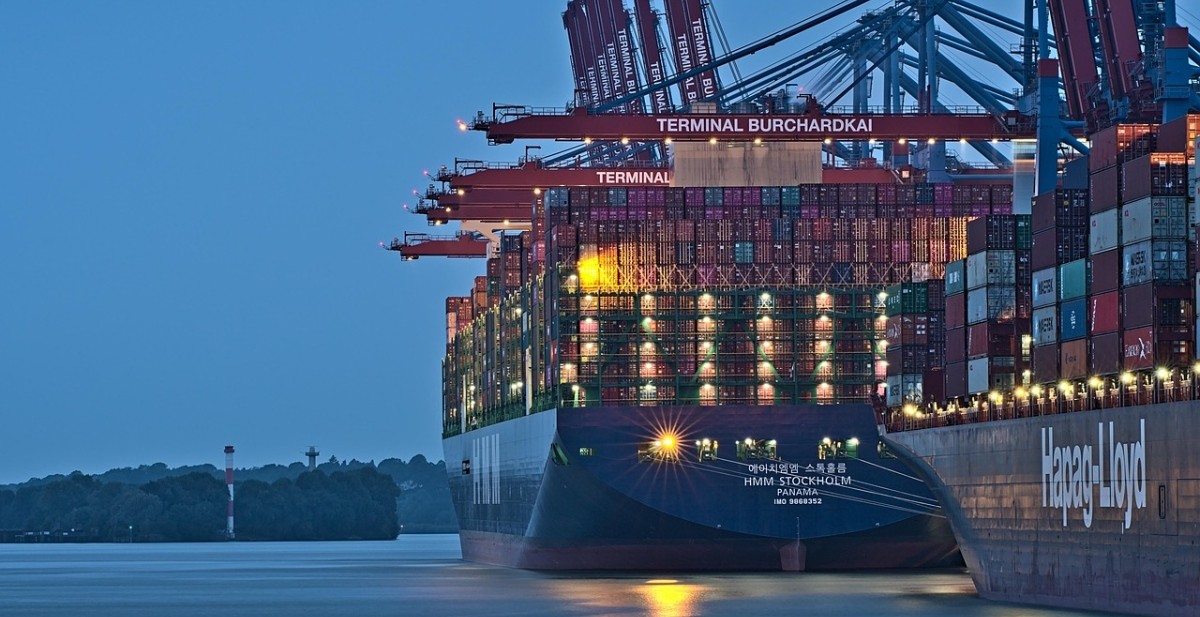Kicking trade issues down the road

Global trade 2025’s surge could mask a steep cliff in 2026
By Carly Fields
The World Trade Organization’s (WTO) latest Global Trade Outlook offers up a contradictory picture of global trade, where unexpected resilience in the first half of the year has delayed an inevitable slowdown, pushing the full impact of restrictive trade policies into 2026.
While global merchandise trade volume is now forecast to grow by 2.4% in 2025—a significant upgrade from the August estimate of 0.9%—the outlook for 2026 has simultaneously "deteriorated” to 0.5%, said the WTO. This shift in timing is the defining feature of the WTO’s latest projections, suggesting that the global economy has simply engaged in an aggressive period of inventory management before the axe falls.
The trade performance in the first six months of 2025 — during which the volume of world merchandise trade was up a robust 4.9% year-on-year — was a function of several exceptional, and possibly temporary, factors, according to the WTO. Chief among these was the "frontloading of imports in North America in anticipation of higher tariffs". Business, expecting tariff hikes, rapidly built-up stock, a move reflected in industry reports indicating a build-up in inventories and a corresponding surge in demand for warehouse space, particularly in foreign trade zones (FTZs) and bonded warehouses that offer tariff risk mitigation.
More structurally significant, the report highlights the growing role of technological demand.
"Al-related goods - the engine of trade growth in 2025" drove nearly half of the global merchandise trade expansion in value terms.
The report found that "46% of global growth in merchandise trade (in value) over the first half of 2025 (6% year-on year) [was] driven by AI-related goods".
Frontloading limitations
The fundamental risk to the 2026 outlook is the inevitable unwinding of the frontloading effect. The WTO cautions that this drive will wane, potentially dragging several economies into a correction as accumulated inventories are drawn down and "reduced business and household consumer confidence … affect purchasing decisions". The report notes that a return to desired inventory levels can take "several months”, and the cost of holding excess stock is substantial, typically estimated at "16%-20% of the item cost per year". The cumulative increase for 2025-26 is only slightly stronger in the current forecast (+2.9%) than in the previous one (+2.3%), a narrow margin that underscores how the "full impact of higher tariffs may have been delayed until next year".
A breakdown of the WTO’s merchandise trade data reveals regional divergences, particularly for North America. Despite recording strong import volume growth of 9.4% in the first half of 2025—a direct result of frontloading—
North American trade flows are now "expected to make a negative contribution to world merchandise trade growth for the whole of 2025 and in 2026".
The regional forecast for 2026 is particularly grim, with North America facing the "biggest reduction on the import side", according to the WTO.
In contrast, Asia is slated to be the main driver of global trade this year, expected to make the "largest positive contribution to trade growth this year". Asia led year-on-year export volume growth in the first half of 2025 at 10.4%, with its import growth also strong at 5.8%. This regional strength reflects Asia’s central role in manufacturing the AI-related goods that are currently driving trade value. Furthermore, the continent’s resilience is bolstered by China's export volume expansion, which grew by 12% in the first half of 2025, outpacing its GDP growth and indicating an "autonomous increase in Chinese exports" that is not solely attributable to trade diversion.
Elsewhere, the developing world shows pockets of growth, notably Africa, which received the "strongest upward revision" on the import side and is now "set to rise nearly 12%" in 2025, said the WTO. Europe and the rest of the world are forecast to make "modest positive contributions to trade expansion in both years".
Limits of tariffs
The analytical chapter in the report addresses a long-standing debate: the use of trade policy, specifically tariffs, to address wide-ranging macroeconomic imbalances, such as current account deficits. The WTO analysis strongly reaffirms the classical "targeting principle" of economic policy, arguing that "each distortion should be addressed with the instrument that targets it most directly".
The report concludes that using tariffs to correct macroeconomic issues like trade imbalances is fundamentally inefficient and carries steep risks.
The core finding is that "trade distortions are best addressed with trade policy, while macroeconomic imbalances are more effectively handled with macroeconomic instruments".
The data supports this, the WTO said, illustrating that the global macroeconomic costs of tariff actions far outweigh those of addressing the root cause—changes in savings rates—with fiscal and monetary policy. The analysis demonstrates that "the global GDP effects of changes in savings are projected to be minimal whereas the costs of tariff actions can be substantial".
The report also serves as a stark warning against escalating trade tensions, noting that the costs of tariff interventions can "further increase if economies respond, resulting in a tit-for-tat trade conflict".
Looking forward, the WTO warns that a "complete fragmentation of the global economy into two geoeconomic blocs can lead to macroeconomic losses of up to 7% of global real GDP".
"Trade resilience in 2025 is thanks in no small part to the stability provided by the rules-based multilateral trading system,” said WTO director-general Ngozi Okonjo-Iweala. “Yet complacency is not an option. Today's disruptions to the global trade system are a call to action for nations to reimagine trade and together lay a stronger foundation that delivers greater prosperity for people everywhere.”